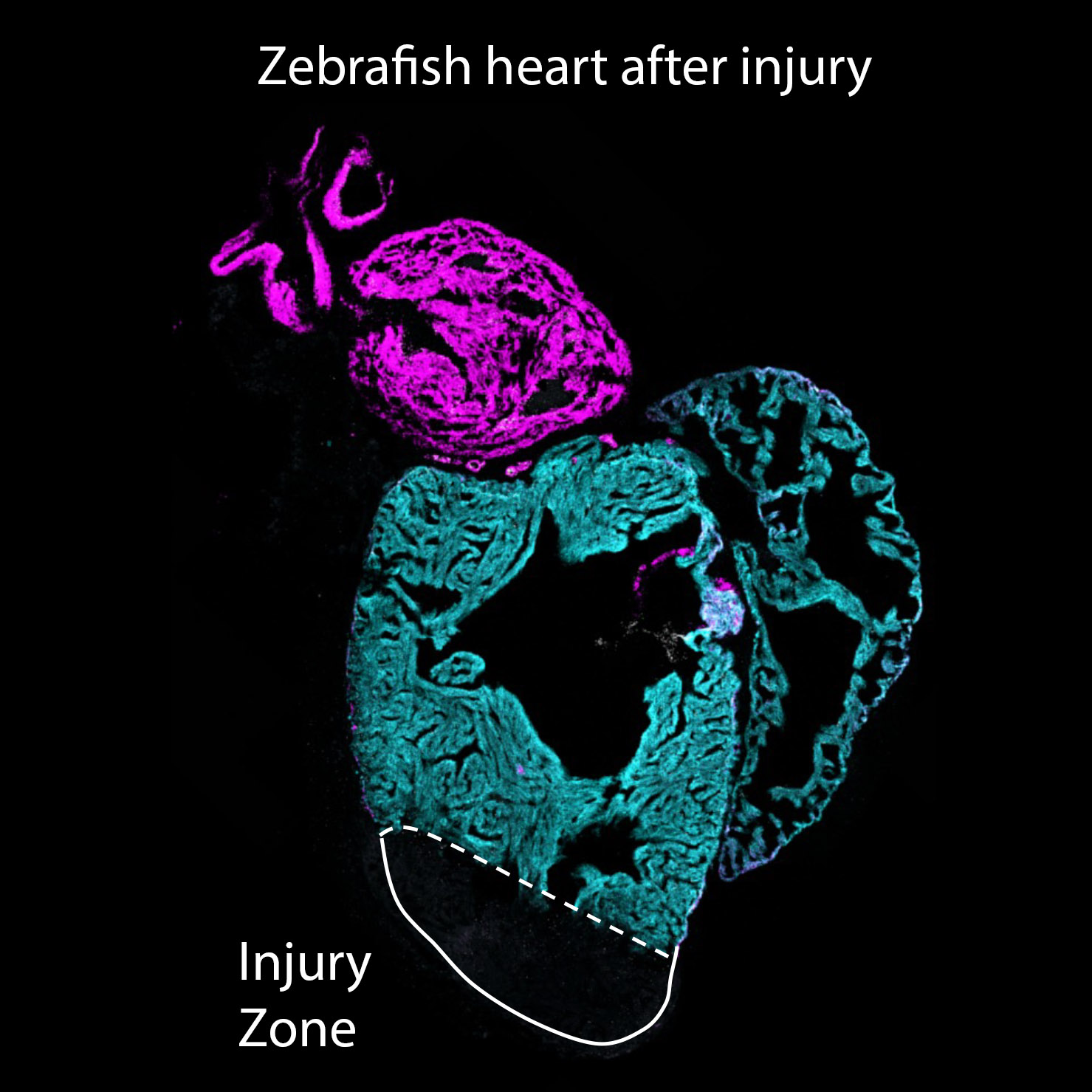Project Background
Cardiovascular disease is a leading cause of death in the United States. One reason that cardiac disease is so fatal is because humans cannot regenerate their heart after injury. After myocarditis or a heart attack, humans form a non-contractile scar that chronically weakens the heart. In contrast, other vertebrates, including the zebrafish, have distinct and robust cardiac regenerative capabilities that allow for full structural and functional recovery after injury. While similar at the genetic and molecular level, human hearts and zebrafish hearts have many differences in size and architecture. This makes it challenging to directly compare between humans and fish. Instead, we are taking a comparative approach across a collection of fish species with variable regenerative capabilities. Our goal is to understand the mechanisms that drive vertebrate heart regeneration, and to uncover the evolutionary conservation of these mechanisms.
Student Role
In summer 2023, a SPUR student will be an integral part of our team that is uncovering the differences between regenerators and non-regenerators. We have already used single-cell RNA sequencing and fluorescent microscopy to compare two fish, one which can regenerate after heart injury (zebrafish) and one that cannot (medaka). We found many differences, including changes to immune cells and heart muscle cells. Our goal this summer is to expand to survey several more fish species to see if these differences are general truths that distinguish heart regenerators from non-regenerators.
This summer, the student will learn experimental and computational methods from our expert team. On the experimental side, this includes manipulating a variety of fish species and using fluorescent microscopy to study aspects of their hearts. On the computational side, the student will be using phylogenetic analysis to understand the evolution of regeneration traits across vertebrates. The student will use these new skills to understand the coordination of a variety of mechanisms enables heart regeneration after injury. Together, this project will combine extensive learning and front-line experience in a supportive and fast-moving science environment.
Student Learning Outcomes and Benefits
Biology is rapidly transitioning into an interdisciplinary field of study which mixes experimental and computational approaches that pull from other fields for experience and inspiration. A rapidly growing sector of pharma, biotech and startups is desperate for students who are fluent in both "wet" and "dry" lab approaches. In addition, these skills are highly sought-after in PhD programs nationwide. This project will teach a variety of cutting-edge technologies, including microscopy, sequencing, and computational analysis, to accelerate skill acquisition. The student will be a full integrated member of our lab, attending all lab meetings, seminars, and participating in summer brainstorming sessions. Since the student will be an essential component of our team, if successful, this project is highly likely to result in peer-reviewed manuscripts with the student as a co-author. In the past, undergraduates in our lab have been co-authors and even lead authors on papers, and many have continued on to medical or graduate school.

James Gagnon
Our primary goal is to provide a platform where students can explore their interests, learn conceptual, experimental, and communication skills, and contribute to scientific inquiry. Our team of postdocs, graduate students, and undergrads provides a friendly and intellectually stimulating support community. Undergraduates in our lab are considered as peer scientists in the lab whose input is valued and respected. The student will be part of a small group working on the heart, currently one postdoctoral fellow, one graduate student, and one undergraduate. This small team, including the SPUR student, will meet every week throughout the summer, alongside regular 1-on-1 meetings with the professor, to discuss short-term and long-term goals, and career planning. The student will also attend and present in our weekly lab meetings and journal clubs, and will be encouraged to attend virtual or in-person seminars and scientific conferences.
